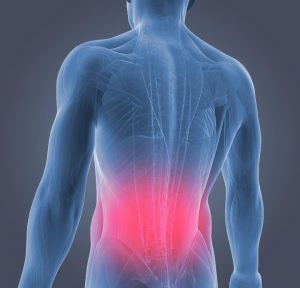Isolation is a pain in the back! LITERALLY…
For many people this pain in the back is all too familiar as they change to the “iso” lifestyle and are forced to work or study from home. Low back pain is the most prevalent musculoskeletal condition worldwide. Recent studies have identified a correlation between periods of quarantine and a spike in the already high prevalence of low back pain (even when quarantine only lasts 2 weeks). This is mainly due to lack of movement, ergonomic changes and other psychological influences. Whilst we cannot do anything about the restrictions imposed on us, we can still make the most of what we have to help manage our back pain. So let’s get into some major factors we CAN control!
Movement
Your muscles and joints were designed for moving and as previously stated; issues arise when they are not being regularly moved. Your spine is no different – movement of the spine is safe and normal so let’s get it moving with some isolation tips!
- Whilst working, try to take regular breaks every 30-60 minutes to consciously move your body during these breaks. Take 2-5 minutes just to stand up, stretch and perform movements such as:
- Neck movements – chin to chest, look to the roof, left ear to left shoulder, right ear to right shoulder, look over your left shoulder, look over your right shoulder
- Full body movements – raise arms out to your sides and perform full body rotations left and right – allow your arms to swing whilst doing this
- You can also keep your spine and pelvis warm with pelvic rotations every 10-15 minutes whilst sitting
- Be sure to keep the blood flowing in your legs with regular calf/ heel raises or foot slides whilst sitting
- Staying in one position too long may be associated with discomfort so make an effort to change positions regularly (e.g. alternate between leaning to one side or the other)
Inadequate ergonomic setups may impact discomfort so be sure to see Dr Jack McElligott’s article regarding home ergonomics.
Exercise
Evidence suggests that exercise is one of the most beneficial techniques for low back pain. It also suggests that no one type of exercise is supreme and rather, any form of exercise is going to be helpful. Thus, whether you pick specific back movements or just general aerobic exercise, choose something you enjoy!
- Walking – Walking around your area of through nature reserves will provide movement at all of your joints (from your toes to your neck), raise your heart rate, improve digestion and clear your mind
- Running – The same benefits as walking. Make sure to ease into it if you have not run for a while. Start with walking then increase to jogging short distances on soft, flat surfaces
- Resistance training – whether you have a home gym, resistance bands or want to just use your own bodyweight: resistance training has been shown to be really effective for low back pain. Try to do full body exercises that incorporate:
- A push movement (e.g. pushups, banded/ resistance band bench press or overhead press)
- A pull movement (e.g. banded/ resistance band rows, pull-ups or banded pull-downs)
- Squat movements
- Hip-hinge movements (e.g. glute bridges, bodyweight or loaded good-mornings/ romanian deadlifts)
- Core exercises (e.g. bodyweight plank, sit-ups/ crunches, pelvic rotations)
- Evidence suggests that progressively introducing some loading on the low back can be very effective for the long term treatment of low back pain
- Yoga – There are some great follow-along yoga videos on YouTube for all levels from beginner through to expert – these may be beneficial to those suffering with back pain
- Stretching – it may be helpful to stretch out your low back and hip muscles. Whilst on your back, bring your needs to your chest for a nice low back stretch
- Some of my favourite exercises for low back pain are:
- Low back rocking – lie on your back with your knees bent at 90 degrees and feet flat on the floor. Gently rock your knees side to side
- Pelvic rotations – lie on your back with your knees as above. Use your abdominal and gluteal muscles to press the small of your low back into the floor. Then arch your back the opposite way and try to make as much space between your back and the ground as possible
- Yoga poses – Alternating between cobra pose and child’s pose
Diaphragmatic breathing – Place one hand on your chest and one on your belly, breathe into your belly and do not let the hand on your chest raise.
Other tips:
- Try using heat packs – back discomfort and stiffness can be more prevalent when cold. So, try using heat packs to keep your back warm.
- Foam rolling – to alleviate some of your symptoms you can give yourself a massage by using a foam roller or tennis ball over tender spots!
- Use ergonomic chairs or try using pillows or towels for lumbar support
- Sleep hygiene – good quality sleep is highly correlated with decreases in pain
- Mindfulness, meditation or breathing techniques – our mental health and psychological wellbeing plays a huge role in our perception of pain, so give these techniques a try
- Overall, doing things you enjoy can have a positive effect on pain. So always make sure you do things you love!
So there are a number of tips to help manage back pain whilst in isolation! You obviously do not have to use all of them but you may find some of them to be beneficial!
Good luck and remember to look after yourselves and those you love.
Stay safe,
Your friendly Osteopath – Dr Connor Scott




